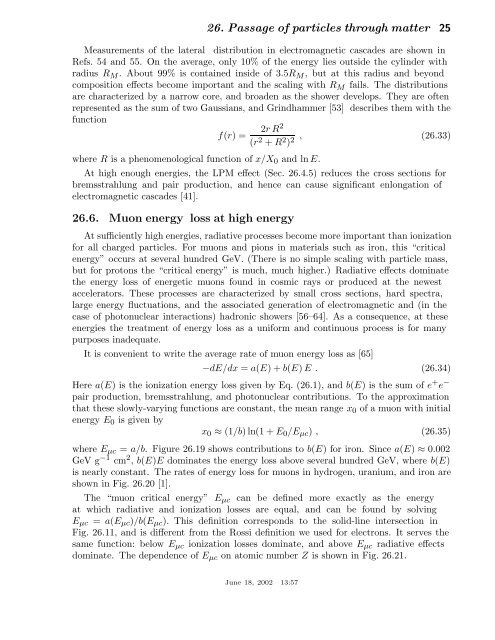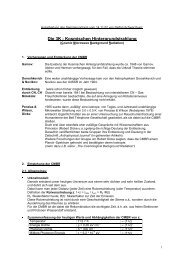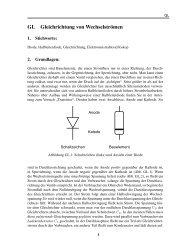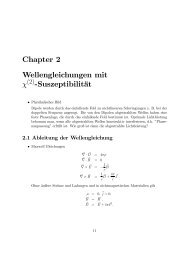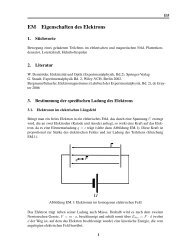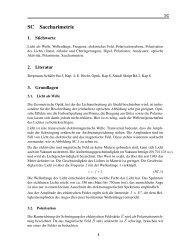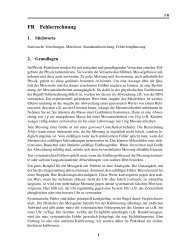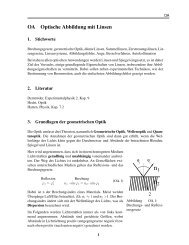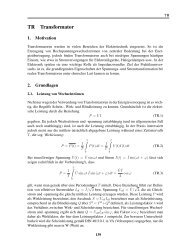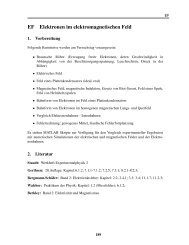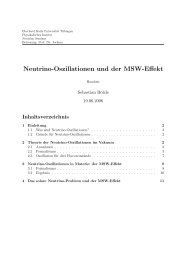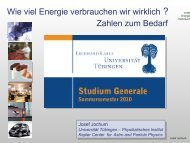26. passage of particles through matter - Particle Data Group
26. passage of particles through matter - Particle Data Group
26. passage of particles through matter - Particle Data Group
You also want an ePaper? Increase the reach of your titles
YUMPU automatically turns print PDFs into web optimized ePapers that Google loves.
<strong>26.</strong> Passage <strong>of</strong> <strong>particles</strong> <strong>through</strong> <strong>matter</strong> 25<br />
Measurements <strong>of</strong> the lateral distribution in electromagnetic cascades are shown in<br />
Refs. 54 and 55. On the average, only 10% <strong>of</strong> the energy lies outside the cylinder with<br />
radius R M . About 99% is contained inside <strong>of</strong> 3.5R M , but at this radius and beyond<br />
composition effects become important and the scaling with R M fails. The distributions<br />
are characterized by a narrow core, and broaden as the shower develops. They are <strong>of</strong>ten<br />
represented as the sum <strong>of</strong> two Gaussians, and Grindhammer [53] describes them with the<br />
function<br />
f(r) =<br />
2rR2<br />
(r 2 +R 2 ) 2 , (<strong>26.</strong>33)<br />
where R is a phenomenological function <strong>of</strong> x/X 0 and ln E.<br />
At high enough energies, the LPM effect (Sec. <strong>26.</strong>4.5) reduces the cross sections for<br />
bremsstrahlung and pair production, and hence can cause significant enlongation <strong>of</strong><br />
electromagnetic cascades [41].<br />
<strong>26.</strong>6. Muon energy loss at high energy<br />
At sufficiently high energies, radiative processes become more important than ionization<br />
for all charged <strong>particles</strong>. For muons and pions in materials such as iron, this “critical<br />
energy” occurs at several hundred GeV. (There is no simple scaling with particle mass,<br />
but for protons the “critical energy” is much, much higher.) Radiative effects dominate<br />
the energy loss <strong>of</strong> energetic muons found in cosmic rays or produced at the newest<br />
accelerators. These processes are characterized by small cross sections, hard spectra,<br />
large energy fluctuations, and the associated generation <strong>of</strong> electromagnetic and (in the<br />
case <strong>of</strong> photonuclear interactions) hadronic showers [56–64]. As a consequence, at these<br />
energies the treatment <strong>of</strong> energy loss as a uniform and continuous process is for many<br />
purposes inadequate.<br />
It is convenient to write the average rate <strong>of</strong> muon energy loss as [65]<br />
−dE/dx = a(E)+b(E)E. (<strong>26.</strong>34)<br />
Here a(E) is the ionization energy loss given by Eq. (<strong>26.</strong>1), and b(E) isthesum<strong>of</strong>e + e −<br />
pair production, bremsstrahlung, and photonuclear contributions. To the approximation<br />
that these slowly-varying functions are constant, the mean range x 0 <strong>of</strong> a muon with initial<br />
energy E 0 is given by<br />
x 0 ≈ (1/b)ln(1+E 0 /E µc ) , (<strong>26.</strong>35)<br />
where E µc = a/b. Figure <strong>26.</strong>19 shows contributions to b(E) for iron. Since a(E) ≈ 0.002<br />
GeV g −1 cm 2 , b(E)E dominates the energy loss above several hundred GeV, where b(E)<br />
is nearly constant. The rates <strong>of</strong> energy loss for muons in hydrogen, uranium, and iron are<br />
shown in Fig. <strong>26.</strong>20 [1].<br />
The “muon critical energy” E µc can be defined more exactly as the energy<br />
at which radiative and ionization losses are equal, and can be found by solving<br />
E µc = a(E µc )/b(E µc ). This definition corresponds to the solid-line intersection in<br />
Fig. <strong>26.</strong>11, and is different from the Rossi definition we used for electrons. It serves the<br />
same function: below E µc ionization losses dominate, and above E µc radiative effects<br />
dominate. The dependence <strong>of</strong> E µc on atomic number Z is shown in Fig. <strong>26.</strong>21.<br />
June 18, 2002 13:57


